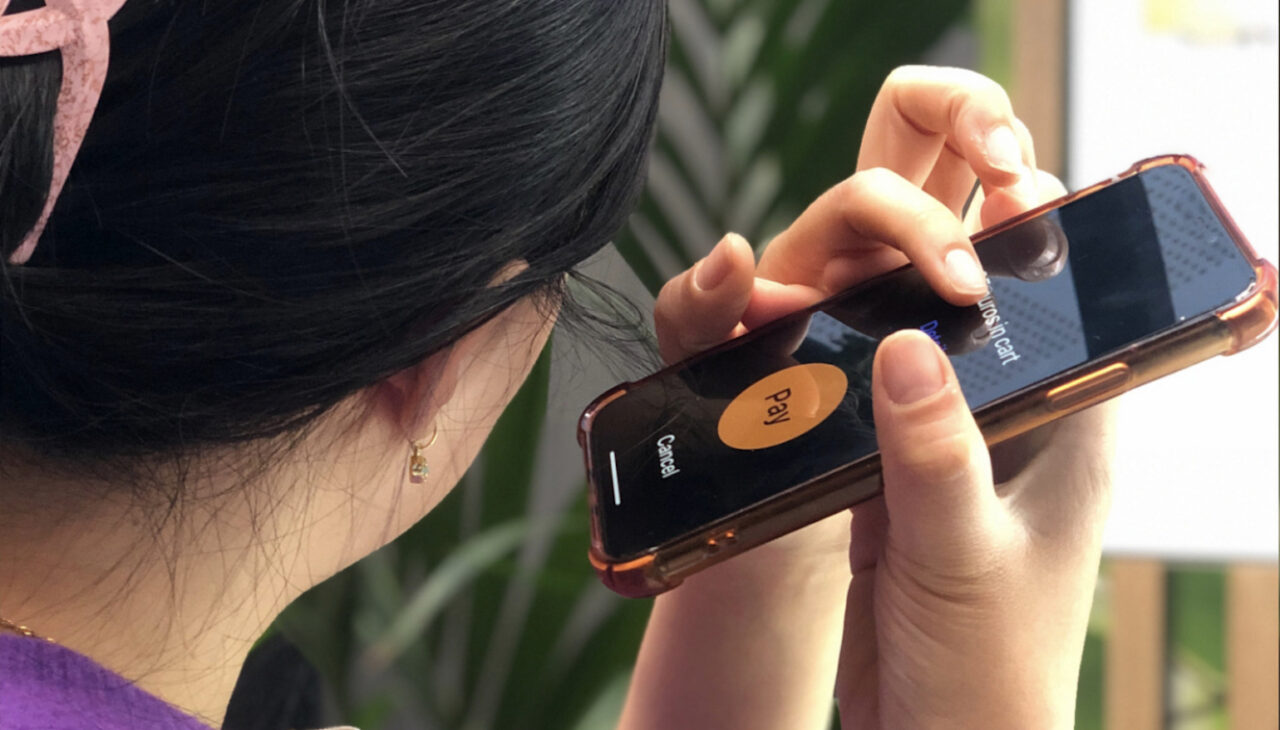Thesis: Blind Mobile Payment
May 2022 - ongoing
A collaboration between the Inclusive Design Lab at the Faculty Industrial Design Engineering TU Delft and ING

Mobile payment
What is it like to use the mobile phone to pay at the supermarket as a person who is blind or has low vision? In her 2022 Master thesis, Yongqing Fei collaborated with experts with visual disabilities, identified the issues with them, and proposed and evaluated a new payment flow. The thesis was a collaboration between the Inclusive design Lab at the Faculty of Industrial Design Engineering of the TU Delft and ING. In addition, it profited from the expertise of the Inclusive Design Lab’s key partner, Visio.
ING used Yongqing’s thesis results in a makeathon to develop a new feature: payment preview. See their presentation of it here.
For more information on the project and the IDE TUD Inclusive Design Lab, you are welcome to contact us.
Doing inclusive design
Yongqing Fei’s thesis takes an inclusive design approach to understand the mismatches between people with visual impairment (PVIs) and the current payment infrastructure in the Netherlands. The research applies existing Inclusive Design and general UX design methods to the context of payment to reveal latent user needs and co-design solutions. Yongqing used Inclusive Design methods to establish close collaboration with experience experts throughout her thesis, and Design for Emotion and Interaction Design methods to envisage and evaluate desirable payment flows. While this project aims to improve payment accessibility for PVIs, it also serves as a case study to apply Inclusive Design methods to the context of payment. The research reveals that inaccessible interfaces of the current payment system often force PVIs to skip important steps of their payment, such as confirming the final amount. Moreover, POS machines and kiosks afford very different experiences for PVIs and sighted people. As a result, when PVIs seek help from sighted people, they often receive unreliable and inaccessible information. The project results in a secure payment transaction design proposal in which PVIs can experience control.